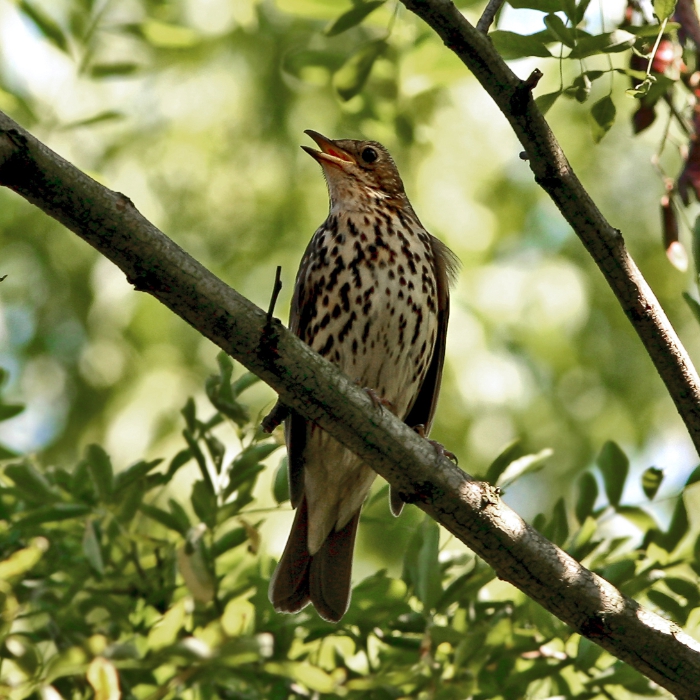Scientific name: Turdus philomelos
Family: Turdidae
Appearance: The Song Thrush is a small and compact member of the thrush family – smaller than the Mistle Thrush with which it is often confused. Its plumage is warm brown above and yellowish-white to white below with dark speckles resembling arrow heads pointing upwards towards the head. These are often arranged in lines. The legs are pink and the bill is brown.
Size: Length 23 cm; wingspan 34 cm
Call: As its name suggests the Song Thrush is an excellent singer and can be recognised – and distinguished from the Blackbird – by its habit of repeating phrases. It sings loudly with cascades of notes which are varied and sometimes shrill - usually from a prominent perch.
Natural history: Song Thrushes breed in woodland, parks and gardens and their preferred food items are insects, worms, snails and fruit. A Song Thrush nest may often be very well concealed, perhaps in a dense hedge. The female lays a clutch of 4 bright blue eggs with black spots which are incubated for around 14 days and fledge 14 days later. They may well have 2 or 3 broods a year.
Song Thrush numbers declined rapidly from the mid-1970s until the mid-1990s probably as a result of changes in farming practices.

Image by Taco Meeuwsen from Hellevoetsluis, The Netherlands - THRUSH TUNE, CC BY 2.0, https://commons.wikimedia.org/w/index.php?curid=5343495

 English (United Kingdom)
English (United Kingdom)  Nederlands (nl-NL)
Nederlands (nl-NL)  Magyar
Magyar  Deutsch (Deutschland)
Deutsch (Deutschland)  Croatian (Hrvatski)
Croatian (Hrvatski)  Polski (PL)
Polski (PL)  Español (España)
Español (España)